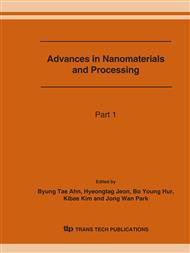p.1709
p.1713
p.1717
p.1721
p.1725
p.1729
p.1733
p.1737
p.1741
Pore Morphology of Lotus-Type Porous Copper Fabricated by Continuous Casting Technique
Abstract:
We investigated the pore morphology in lotus-type porous copper fabricated by continuous casting technique as a function of transference velocity range from 1 to 100 mm・min-1 under hydrogen gas pressure of 1.0 MPa. Lotus-type porous copper with long cylindrical pores aligned in one direction parallel to the transference direction was fabricated, which posses a sufficient uniformity of the porosity and pore size. The pores formed at transference velocity of 1 mm・min-1 were larger than other condition. Necks were observed in these pores, whose formation may be attributed to bubbling in the melt. The pore size decreased with increasing transference velocity, while the porosity was not varied much by transference velocity.
Info:
Periodical:
Pages:
1725-1728
Citation:
Online since:
June 2007
Authors:
Price:
Сopyright:
© 2007 Trans Tech Publications Ltd. All Rights Reserved
Share:
Citation:


